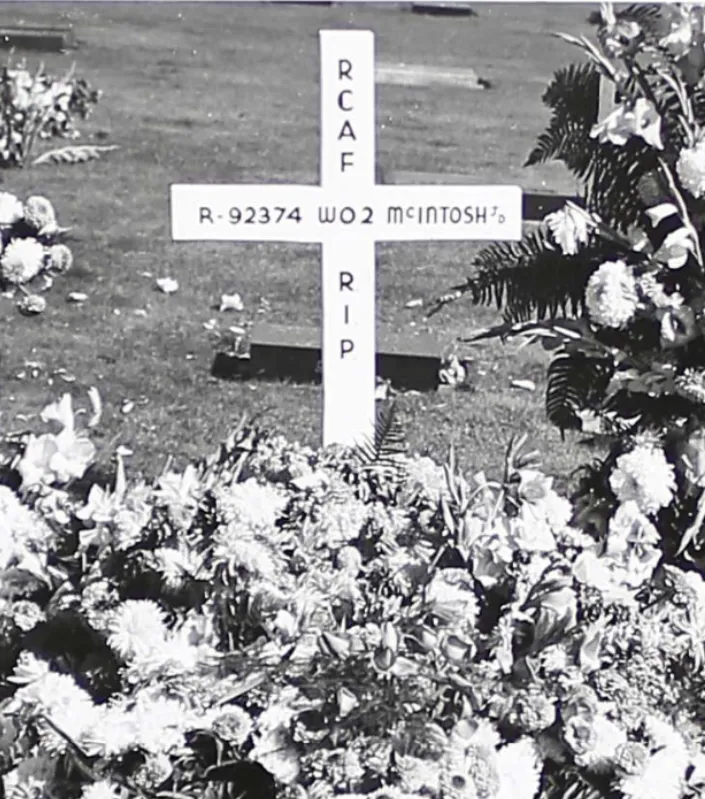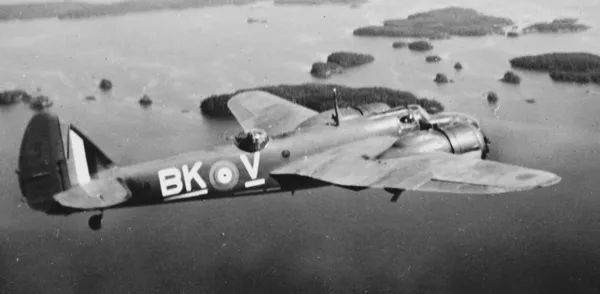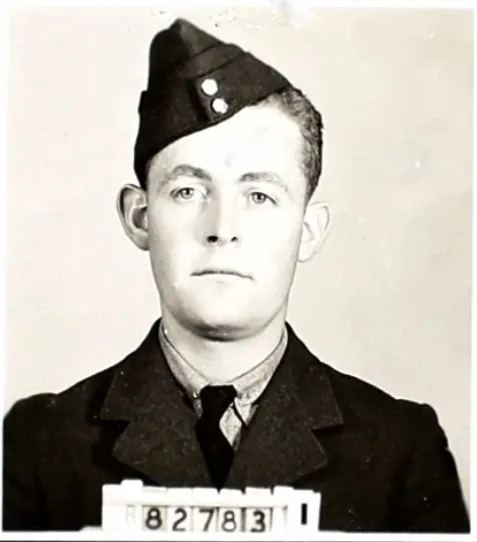McIntosh, John Daryl
Killed in Action 1943-09-20


Birth Date: 1921-November-28
Born:
Son of William Donald and Kate McIntosh, of Vancouver.
Home: Vancouver, British Columbia
Enlistment:
Enlistment Date: Unknown
Service
RCAF
Unit
8 Sqn- Squadron (RAF)
Uspiam Et Passim Everywhere unbounded
Base
RAF Khormaksar, Aden (now Yemen)
Rank
Warrant Officer 2
Position
Warrant Officer 2
Service Numbers
R/92374
First Burial
 Masonic Cemetery At Vancouver, British Columbia
Masonic Cemetery At Vancouver, British Columbia
This incident involved multiple aircraft:
- Bolingbroke Mk. IV Serial: 9056
All the above aircraft in the above list are referenced in this report.
Bolingbroke 9056
Bristol Bolingbroke

Fairchild Bolingbroke Mk. IV, RCAF (Serial No. 9118), coded BK-V, No. 115 (Bomber Reconnaissance) Squadron, Patricia Bay, British Columbia, 1942.
The Bristol Fairchild Bolingbroke was a maritime patrol aircraft and trainer used by the Royal Canadian Air Force during the Second World War. Built by Fairchild-Canada, it was a license-built version of the Bristol Blenheim Mk IV bomber.
In 1935, the British Air Ministry issued Specification G.24/35 to procure a coastal reconnaissance/light bomber to replace the Avro Anson. Bristol proposed the Type 149, based on its Blenheim Mk I, with Bristol Aquila engines to give greater range. While the Air Ministry rejected this proposal, a Blenheim Mk I, retaining its Mercury VIII engines, was converted as a Type 149 (Blenheim Mk III) for the general reconnaissance role.The nose was lengthened to provide more room for the bombardier, with the upper left surface of the nose being scooped out to maintain pilot visibility during takeoff and landing.
The longer range also fulfilled a Canadian requirement for a maritime patrol aircraft. Consequently, Fairchild Aircraft Ltd. (Canada) of Quebec started production of the Blenheim Mk IV as the Bolingbroke (the originally intended name for the Blenheim IV). This type was nicknamed the "Bolly". After a small run of aircraft constructed to British specifications, as the Bolingbroke Mk I, Fairchild switched production to the Bolingbroke Mk IV with Canadian and American instruments and equipment. These versions also included anti-icing boots and a dinghy. One of the early Mk IV variants was the Bolingbroke Mk IVW which was powered by two 825 hp (615 kW) Pratt & Whitney SB4G Twin Wasp Junior engines. Incapable of maintaining altitude on one engine, the normal bomb load was reduced to 500 pounds on these aircraft to compensate for the low engine power. The most-produced variant was the Bolingbroke Mk IVT trainer, of which 457 were completed. A total of 626 Bolingbrokes were produced.Wikipedia
Bolingbroke 9056
Bolingbroke Mk. IV 9056
Cat "B" crash at Patricia Bay, at 12:20 on 15 Jan 1942, after complete failure of hydraulic system. To Boeing Aircraft Canada in Vancouver for repairs, 27 Jan to 1 Jun 1942. To WAC when completed, for use by No. 8 (BR) Sqn in Alaska. Cat "A" crash on 20 September 1943; the dinghy stowage panel released in flight and the dinghy struck the tail-plane. The whole tail section detached and the a/c spun inverted into ground. The crew, Flying Officer B. Bristol and Warrant Officer Class 2 J. Mcintosh, were both killed. Allocated to No. 3 Repair Depot in Vancouver for write off.{{link,canadaprimary,https://heritage.canadiana.ca/view/oocihm.lac_reel_c5933/1372,RCAF - Accident Investigation File}}
{{link,canadaprimary,https://recherche-collection-search.bac-lac.gc.ca/eng/Home/Result?q_type_1=q&q_1=boundary+bay&DataSource=Images&SEARCH_TYPE=SEARCH_ADVANCED&num=50&start=100&enviro=prod&ecopy=e011196268-v8,LAC photo of crash scene}}
1941-12-16 Taken on Strength Western Air Command 2019-08-20
1942-January-15 Accident: 115 Squadron Loc: Aerodrome Patricia Bay Names: Smith | Wallace
1943-September-20 Accident: 8 Squadron Loc: Crescent Beach British Columbia Names: Bristol | Mcintosh
1943-10-13 Struck off Strength Struck off, reduced to spares and produce 2019-08-20
 Canadian Virtual War Memorial
Canadian Virtual War Memorial Commonwealth War Graves Commission
Commonwealth War Graves Commission www.findagrave.com
www.findagrave.com

 Wikipedia Bolingbroke Bomber
Wikipedia Bolingbroke Bomber Harold A Skaarup Web Page
Harold A Skaarup Web Page Bolingbroke Bomber WWII
Bolingbroke Bomber WWII Bolingbroke - Kestrel Publications
Bolingbroke - Kestrel Publications